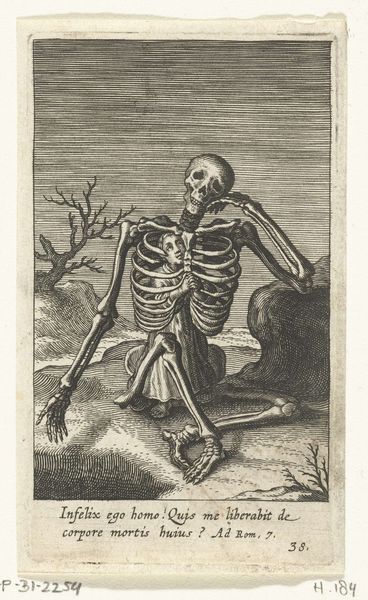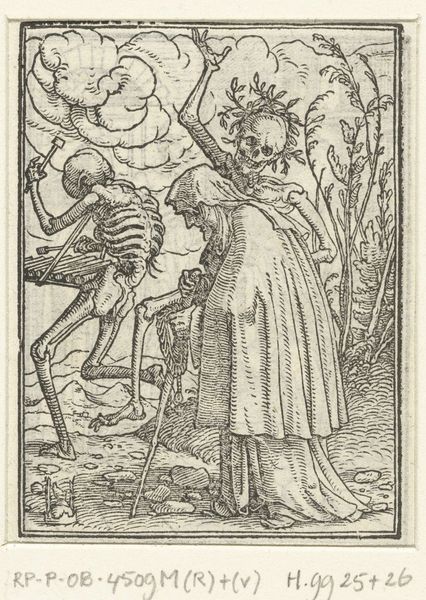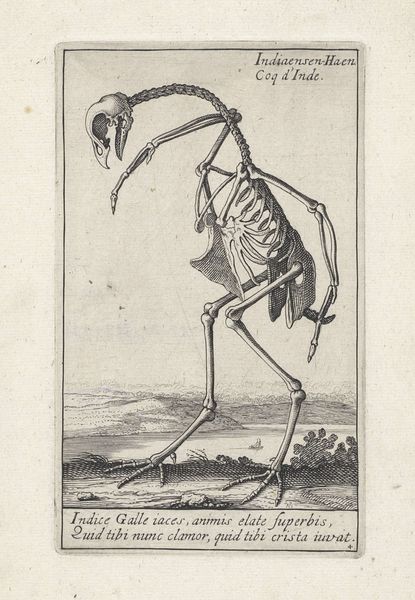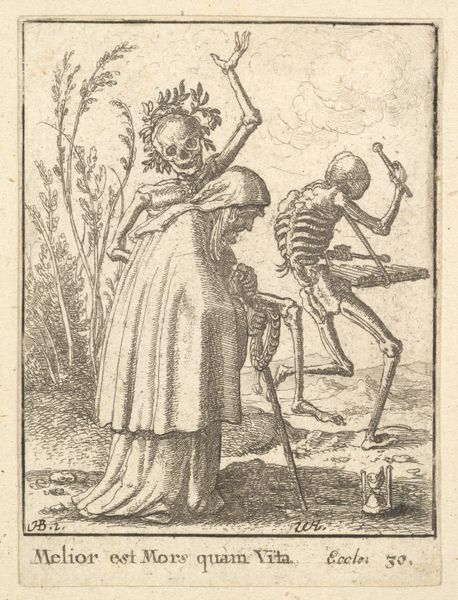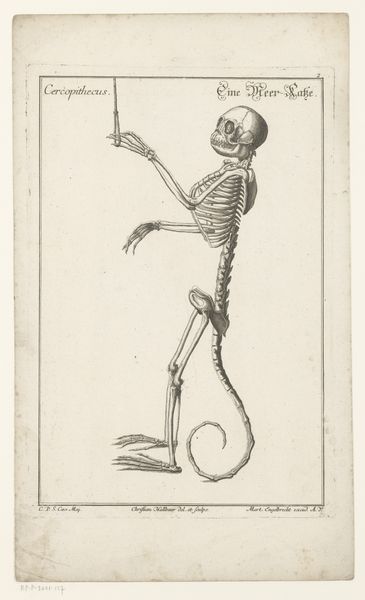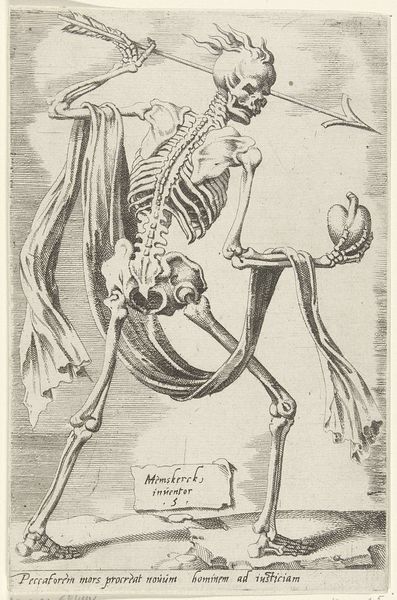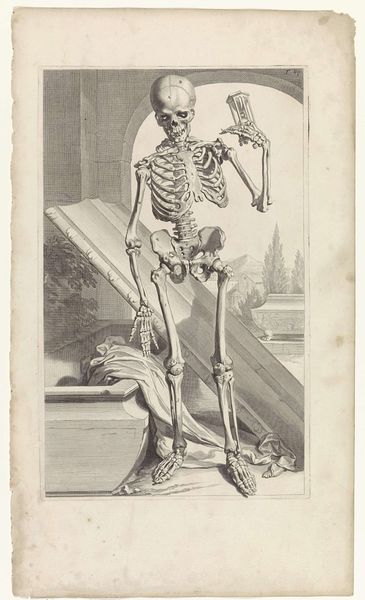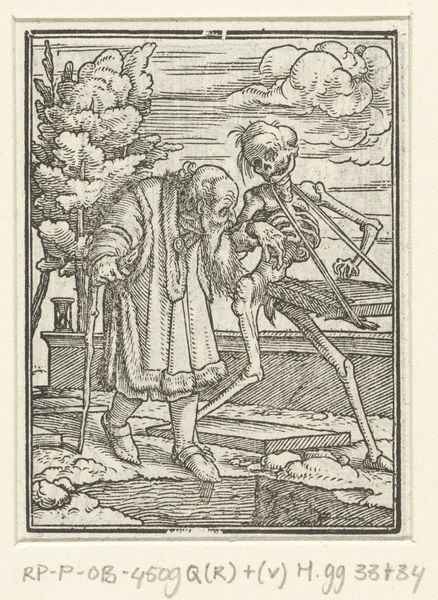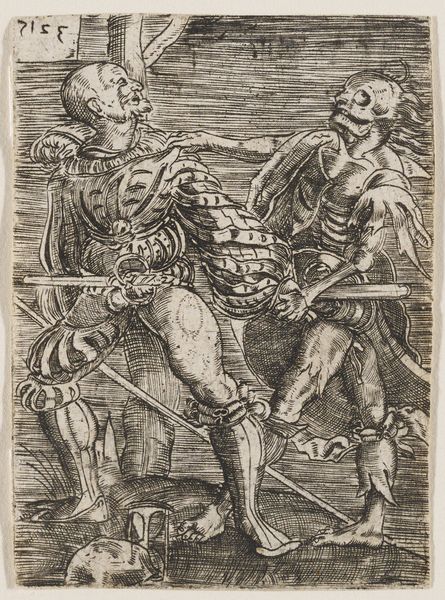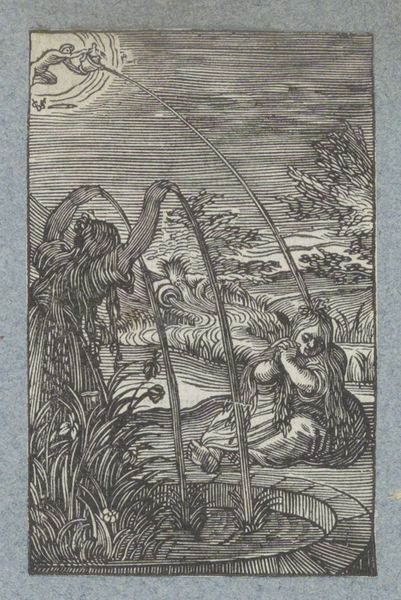
engraving
#
baroque
#
figuration
#
form
#
momento-mori
#
line
#
history-painting
#
engraving
#
realism
Dimensions: height 83 mm, width 53 mm
Copyright: Rijks Museum: Open Domain
This small woodcut, "Kind in skelet van de Dood," was made by Christoffel van Sichem II in the 17th century. It's an image of a child in the skeleton of death. The artwork is made using the woodcut technique, a relief printing process where an image is carved into the surface of a block of wood, with the printing parts remaining level with the surface while the non-printing parts are removed. The texture of the wood grain, though subtle, influences the final print, adding depth and a tactile quality. This process involves significant manual labor, reflecting the skilled craftsmanship of the artist. The fine lines and details suggest a mastery of carving techniques. Woodcut as a medium has a rich history, often associated with popular and accessible imagery. In this case, the choice of material emphasizes the themes of mortality and fragility. The labor-intensive process also underscores the value and permanence of the image. By understanding the materials and making of this artwork, we can appreciate its historical and cultural significance, while also questioning traditional hierarchies between art and craft.
Comments
No comments
Be the first to comment and join the conversation on the ultimate creative platform.
